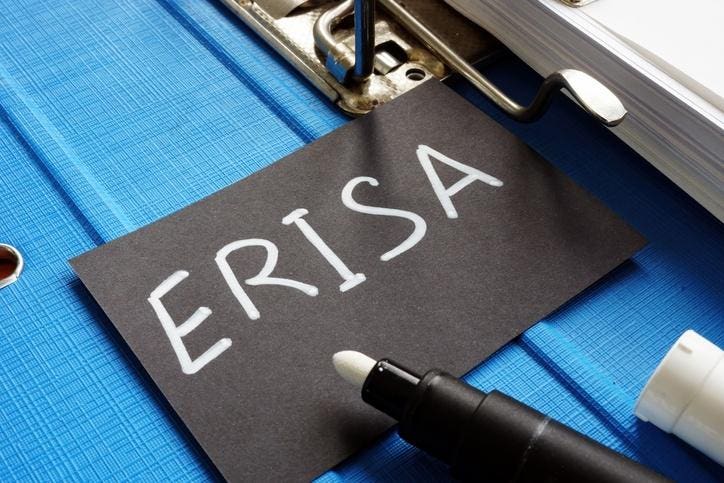Major milestones are a good opportunity to pause, reflect, and think about where we are heading. This year is a major milestone for the retirement industry as the Employee Retirement Income Security Act of 1974 (ERISA) reaches its 50th anniversary today.
ERISA is the federal law that for the first time set important standards for most voluntarily established retirement and health plans in the private sector to protect individual participants and beneficiaries. Key provisions of ERISA require plans to provide participants with essential plan information; set minimum standards for participation, vesting, benefit accrual, and funding; establish fiduciary responsibilities for those who manage plan assets; and guarantee payment of benefits through the Pension Benefit Guaranty Corporation (PBGC) for terminated defined benefit pension plans.
There are numerous ERISA successes to celebrate, but there also are challenges associated with the law that can be addressed to help create better retirement outcomes in the future.
Major Successes of ERISA
ERISA has helped Americans prioritize saving for retirement through employer plans at a key juncture when people are living longer. When ERISA was enacted, defined benefit pension plans were the primary type of retirement plan offered by private sector employers.
Thanks in part to ERISA, U.S. pension plans have paid out roughly $8.7 trillion dollars to America’s seniors just since 2009. According to the Investment Company Institute, another $12 trillion in assets are held by pension plans that invest and manage these funds for the benefit of 25 million retirees and millions of workers. Pensions continue to do much of the heavy lifting to preserve a reasonable standard of living for retirees by supplementing Social Security benefits.
Another success of ERISA is that it provides a wide range of protections to workers to ensure retirement assets go toward workers’ retirement benefits and employers are adequately funding these plans. ERISA also created a federal insurance program directed by the PBGC that protects retirement benefits, even if a plan closes or a company goes out of business. Importantly, the program is funded by premiums paid by pension funds, not taxpayers. Typically, the PBGC steps in to oversee plan assets and ensure payment of benefits after a firm ceases to exist. This has proven to be an incredibly successful program, protecting millions of retirees and their beneficiaries.
Despite ERISA Success, Retirement in America Faces Ongoing Challenges
The most pressing retirement challenge facing the nation is that nearly half of the U.S. workforce is not participating in a workplace retirement plan. According to AARP, nearly 57 million people, or 48 percent of American private-sector employees ages 18 to 64, work for an employer that does not offer either a traditional pension or a retirement savings plan. This is a fundamental weakness in the U.S. retirement system because access to a retirement plan at work is critical for building financial security later in life. People are much more likely to save for retirement if they can do so automatically through their paycheck. For the U.S. retirement system to work, we can’t leave half of the workforce without a workplace retirement plan.
Another related challenge is the concentration of benefits among workers who are higher earners. There are three major contributing factors to this trend:
— Access and participation in workplace plans are highly correlated to one’s level of pay. Participation rates are fairly strong among the highest earners, but as one moves down the income scale, retirement plan participation rates decrease.
— The tax benefits of saving for retirement within the U.S. tax code skew rewards to higher earners. A family’s income must hit six figures before the tax match exceeds 12 percent. Today, those with lower incomes will lock up precious dollars for many years with little tax benefit, especially compared to higher earners.
— Higher paid workers simply have the means to save more for retirement because they have more disposable income.
The combined impact of these factors is explained in depth in a 2022 report, The Missing Middle: How Tax Incentives for Retirement Savings Leave Middle-Class Families Behind, which found the tax breaks designed to increase Americans’ retirement savings disproportionately benefit high-income households and do little to assist middle-class families. Additionally, a U.S Government Accountability Office (GAO) report highlights how the disparities between low-income and high-income older workers’ retirement account balances continue to grow.
Third, there has been a significant shift from traditional pensions to defined contribution 401(k) plans in the private sector, which has shifted all retirement risks, costs, and burdens onto individuals.
The National Association of State Retirement Administrators’ (NASRA) Guiding Principles offer an excellent overview of core elements of a strong retirement plan design. Early 401(k) designs failed on numerous levels, as the migration to 401(k) plans in the private sector was largely driven by a company’s desire to shift risks and costs from employers to workers. This may improve a corporate balance sheet. But in this shift away from pensions, many of the core elements of effective plan design were lost. However, there has been real progress when it comes to strengthening 401(k)s and reason for optimism looking forward.
Finally, ERISA seems to work well today for large firms, but not for smaller companies. Running a pension or 401(k) can be difficult for smaller employers, so often, they simply don’t. And it’s likely that large firms are disproportionately represented in discussions about potential improvements to ERISA.
To increase retirement plan access for workers, it’s imperative to make it easier for small employers to offer or participate in retirement plans that have economies of scale and reduce administrative burdens on employers. There have been steps in this direction with pooled employer plans (PEPs) no longer requiring a ‘common nexus’ that severely limits usage. These PEPs allow employers to join a plan and make contributions, while the plan is responsible for the major duties that require professional plan management skills. However, multiple employer plans (MEPs) continue to be a niche industry because of the ‘common nexus’ requirement. The requirement remains for multiemployer plans, too.
Looking Ahead, There’s Reasons for Retirement and ERISA Optimism
There are several positive signs when it comes to improving retirement savings plans. Examples are the potential expanded use of PEPs and the growth of auto-enrollment features in 401(k) plans. In addition, the 401(k) industry has been making major strides toward the NASRA Retirement Plan Core Elements identified above. Default investments today are substantially better, fees are lower, lifetime funds offer a good hands-off investment option for workers, and staying within a 401(k) plan and receiving income throughout retirement in DC plans is now available (though not highly utilized yet). These improvements have resulted in added 401(k) plan efficiency and simplicity and made these plans more user-friendly. Sending workers out of a well-run retirement plan at retirement has always been problematic, given the combination of lost fiduciary protections and the added complex challenge of generating income from a lump sum.
To build upon these improvements, there are pragmatic steps that can be taken to further strengthen ERISA and retirement outcomes for workers. For example:
— ERISA should clearly provide more flexibility in risk-sharing benefit designs in pension plans. There is a balance between enjoying protections and offering flexibility. But it is hard to see how a pension that offers a variable post-retirement benefit increase (or cost-of-living-adjustment that is designed to reduce risk) is more problematic for a worker than a plan that offers no COLA whatsoever. And yet, plans with no COLA clearly conform with the current regulations and get approved promptly.
— Abandon the “Common Nexus” requirement for MEPs and perhaps also multi-employer plans. When investing, there is diversification across industries and asset classes as a necessity for a well-designed portfolio. But for pensions, single-industry plans are encouraged. Industry diversification would be a strength here, as well. The overwhelming majority of multiemployer plans are healthy, but the challenges that have emerged often are tied to single-industry plans that failed to maintain balanced demographics when those industries were disrupted.
— Make it easier for small employers to offer retirement plans. If PEPs, MEPs, and multi-employer plans were free to span industries and offer benefits that are attractive to employers while mitigating risks, large institutions would need to step up and build plans that smaller employers can buy-into.
— Single-employer plan PBGC premiums should not be artificially elevated beyond the program’s projected needs to justify non-related tax cuts or spending priorities in federal budget deals. This issue is driving employers out of pension plans, discouraging plan adoption, and motivating employer decisions to “derisk.”
Policy discussion often focus on the challenges, but there is a tremendous amount to appreciate regarding ERISA’s first 50 years. Staying focused on improvements and bringing more workers into retirement systems will benefit future generations immensely. Afterall, Americans are living longer and costs are rising, which means retirement is only growing more challenging.
Read the full article here










